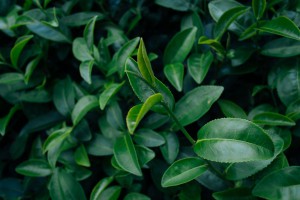
Fresh tea is tasty and it is important to store it properly so that your tea always tastes like you just opened the package yesterday, but how fresh does tea really have to be and how soon should we drink it after harvest?
As with all questions about tea, the answer is as diverse as are the different kinds of tea.
Because each kind of the seven major genres of tea is made differently and because each type of tea has different leaf structures, there are also different rules about the best time to drink them.
Green tea is the easiest to understand, because green tea is made from tender leaves which degrade quickly, so to get the best green tea, you should always drink it as close to the time of harvest as possible. Because green tea is mainly harvested in spring and late summer, the best times of year to drink green tea are from May until October, unless you are very well connected and can get the earliest spring tea from April before the Qing Ming festival.
Older green tea is ok too, but it becomes less flavourful over time and after a year or so if it isn’t properly stored, it will go flat and stale.
Oolong tea is different from green tea and is somewhat more complex.
With Oolong, we are at least partially concerned with production process because green teas need to be enjoyed earlier than baked teas.
For traditional balled green oolong teas such as Tieguanyin, Qingxin Oolong, and Siji Chun Oolong, we should drink them within two years after harvest. Because Oolong is balled tightly, it can last longer than Chinese green tea, but after a couple of years it needs to be baked in order to stop it from becoming stale due to oxidization.
Baked Oolong is a different matter and should be stored for at least three months after production. This is because the tea needs time to let out the fire it has been exposed to and gradual oxidization will allow some of the carbon taste to naturally disappear, leaving behind the subtle scents of orchids and dark fruit which baked Oolong is famed for.
Often we can even keep baked Oolong in an air tight package for a year or longer and have it still taste farm fresh.
Baked Oolong can also be aged in certain situations and aged Oolong can fetch considerable money on the tea market because of its relative rarity and association with culture.
Black Tea can usually be kept indefinitely as long as it is well stored and in the case of heavier teas such as Qi Men Hong, Assam, and Dian Hong often improves slightly if it is kept for at least six months after harvest. This is for the same reason as baked Oolong, the tea needs some time to let go of the heat it has built up with baking.
Lighter black teas such as Darjeeling and Maojian style teas which are mostly made of tips should be enjoyed closer to harvest, because just like with green tea, they can break down quickly and become stale.
White tea is also complex, with all white teas being able to be aged and Silver Needle and White Peony also being good fresh, while Shou Mei tea is enjoyed better with a few years of ageing.
Of course, Pu’er, Zhuan Cha, and most other bricked teas are better aged, but there are also many wild Pu’er teas which taste great fresh off the bush. Pu’er is probably the most complex category of tea, so it takes time to learn what to drink and when.
I hope this article has been informative and enjoyable and I welcome you to come in to our tea house or purchase our teas online to try some of the finest examples of Chinese, Taiwanese, and herbal tea available today.
All the best,
Chayo Tea owner,
Robert Coons.